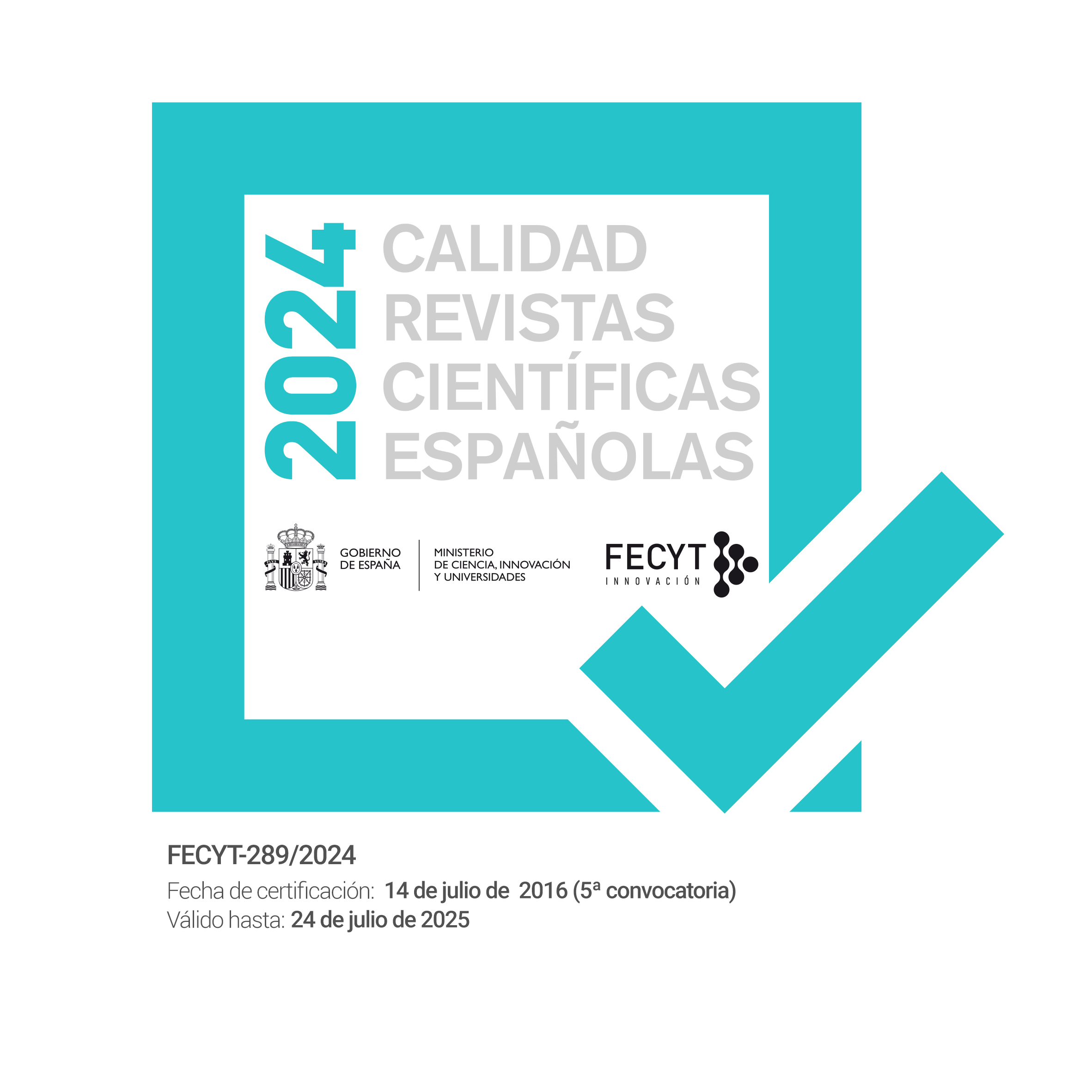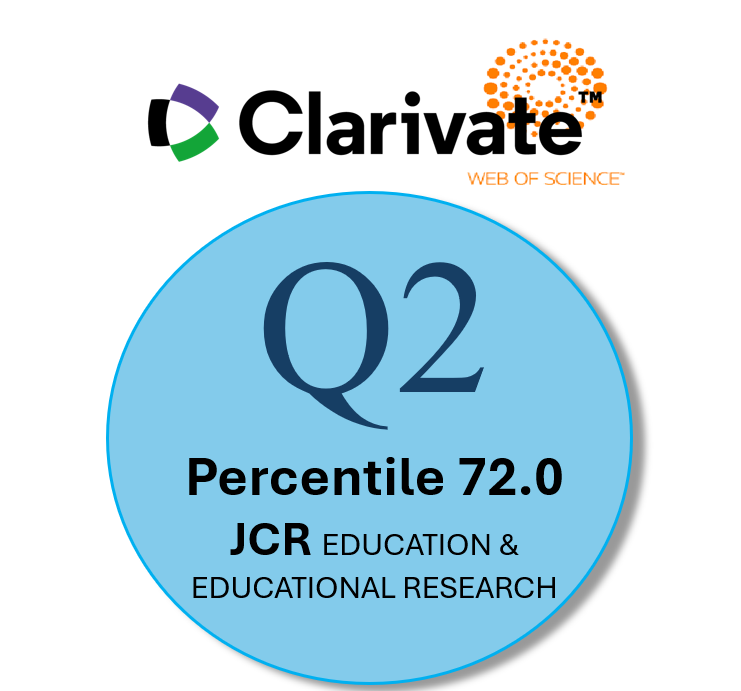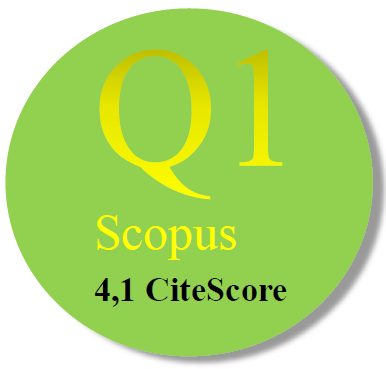Español
Español
Abstract
The entry of mobile devices into the teaching-learning process in education, occurred during the last years, has permeated all educational sectors, and has consequently required the incorporation in every discipline of new working methodologies or the adjustment of the existing ones. In any event, the incorporation of this kind of technology is demanding the implementation of organizational structures capable of adapting to the inherent potentialities of mobile devices, as well as to the different conceptual approaches in the teaching-learning process.
In this work we propose a model of structure for the Visual Arts Education, which integrates the different phases and the necessary actions to be carried out, while considering learners as the central axis of the process. This model is based, on the one hand, on the definition of the learning setting, the strategic planning and the operational phase, and on the other hand, on the contexts and the working spaces from where the forms of intervention in the Visual Arts Education may be organised. As a final result, the instructional design of the mobile devices determines the planning of the actions in spaces of autonomous and authentic learning in which Visual Arts Education takes place. Finally, we propose the definition of the prototype, the test, the evaluation and the implementation of the strategy at the moment of production.
Downloads
-
Abstract1943
-
ramon_et_al (Español (Esp...662
References
Al-Hnaiyyan, A., Al-Sharhan, A. y Alhajri, R. (2017). A New Mobile Learning Model in the Context of Smart Classroom Environment: A Holistic Approach. International Journal of Interactive Mobile Technologies (iJIM), 11(3). DOI: https://doi.org/10.3991/ijim.v11i3.6186
Ally, M. (2004). Using learning theories to design instruction for mobile learning devices. mLearn 2004, 3rd world conference on m-learning (http://goo.gl/GOAmmh).
Botturi, L., Canotoni, L., Lepori, B. y Tardini, S. (2007). Fast prototyping as a communication catalyst for e-learning design. En M. Bullen y D. P. Janes (Eds.). Making the transition to e-learning. Strategies and Issues (pp. 266-283). Hershey: Idea Group Inc.
Brown, T. H. (2005). Beyond constructivism: Exploring future learning paradigms. Education Today, 2. New Zeland: Aries Publishing Company (http://goo.gl/u71QH4).
Buchem, Ll. y Camacho, M. (2011). M-project: first steps to applying action research in designing a mobile learning course in higher education (http://goo.gl/YrNrgO).
Christensen, C., Horn, M. B. y Johnson, C. W. (2011). Disrupting Class: How Disruptive Innovation Will Change the Way the World Learns. New York: McGraw Hill.
Colón, B., Taylor, K. A., y Willis, J. (2000). Constructivist instructional design: Creating a multimedia package for teaching critical qualitative research (http://goo.gl/zMy5Xz) (08-01-2014).
Dick, W., Carey, L. y Carey, J. O. (2015). The systematic design of instruction (8ª ed.). Upper Saddle River: Pearson.
Efland, A. D., Freedman, K. y Stuhr, P. (2003). La educación en el arte posmoderno. Barcelona: Paidós.
Engeström, Y. (1999). Activity theory and individual and social transformation. En Y. Engeström, R. Miettinen y R. Punamäki (Eds.), Perspectives on Activity Theory. Cambridge: Cambridge University Press.
Eisner, E. W. (2002). Ocho importantes condiciones para la enseñanza y el aprendizaje de las artes visuales. Arte, Individuo y Sociedad, 1, pp. 47-55 (http://goo.gl/GjoKWJ).
Filali Marzouki, O., Khalidi Idrissi, M. y Bennani, S. (2017). Effects of Social Constructivist Mobile Learning Environments on Knowledge Acquisition: A Meta-Analysis. International Journal of Interactive Mobile Technologies (iJIM), 11(1). DOI: https://doi.org/10.3991/ijim.v11i1.5982
Freedman, K. (2003). Teaching Visual Culture. Curriculum, Aesthetics and the Social Life of Art. New York: Teachers College Press.
Hernández Hernández, F. (2010). Educación y cultura visual. Barcelona: Octaedro.
Herrington, A. y Herrington, J. (2007). Authentic mobile learning in higher education. En Australian Association for Research in Education (AARE) (Ed.), International Educational Research Conference, 28 de noviembre. Western Australia: Fremantle (http://goo.gl/s2D5sL).
Holmberg, B. (1995). Theory and Practice of Distance Education (2ª Ed.). London: Routledge.
Jonassen, D. (1999). Designing Constructivist Learning Environments. En C. Reigeluth (Ed.), Instructional-Design Theories and Models. A New Paradigm of Instructional Theory, 2, pp. 215-239. New York: Routledge.
Jonassen, D. (2000). Toward a Design Theory of Problem Solving. Educational Technology Research and Development, 48(4), pp. 63-85.
Kaptelinin, V. y Nardi, B. A. (2006). Acting with Technology Activity Theory and Interaction Design. Cambridge: MIT.
Koole, M. (2006). The framework for the rational analysis of mobile education (FRAME) model: An evaluation of mobile devices for distance education (Tesis Doctoral). Disponible en el repositorio digital CiteSeerX (http://goo.gl/rJeNiS).
Laurillard, D. (2002). Rethinking University Teaching. A conversational framework for the effective use of learning technologies. London: RoutledgeFalmer.
Laurillard, D. (2007). Pedagogical forms for mobile learning: framing research questions. En N. Pachler (ed.), Mobile learning: towards a research agenda (pp. 153-175). London: WLE Centre, IoE.
Lave, J. y Wenger, E. (1991). Situated Learning: legitimate peripheral participation. Cambridge: Cambridge University Press.
Lombardi, M. M. (2007). Authentic learning for the 21st century: an overview. ELI Papers and Reports. (http://goo.gl/wz3woc).
Moore, M. (1993). Theory of transactional distance. En D. Keegan (Ed.), Theoretical Principles of Distance Education (pp. 20-35). New York: Routledge.
Morrison, D. (2007). E-Learning in higher education: the need to a new pedagogy. En M. Bullen y D. P. Janes (Eds.). Making the transition to e-learning. Strategies and Issues (pp. 104-120). Hershey: Idea Group Inc.
Morrison, G. R., Ross, S. M., Kalman, H. K. y Kemp, J. E. (2013). Designing effective instruction (7ª ed.). Hoboken, NJ: John Wiley & Sons, Inc.
Morrow, J. y Holland, J. (2011). Pask and Ma join forces in an elementary mathematics methods course. En IRMA (Ed.), Instructional design: concepts, methodologies, tools, and applications, (pp. 1806-1816). New York: Information Science Reference.
Naismith, L., Lonsdale, P., Vavoula, G. y Sharples, M. (2004). Literature Review in Mobile Technologies and Learning. (http://goo.gl/efKqJO).
Narciss, S. (2008). Feedback Strategies for Interactive Learning Tasks. En J. M. Spector, M. D. Merrill, J. Merriënboer y M. P. Driscoll (Eds.), Handbook of research on educational communications and technology (3ª ed.). New York: Lawrence Erlbaum Associates.
Park, Y. (2011). A pedagogical framework for mobile learning: Categorizing educational applications of mobile technologies into four types. The International Review of Research in Open and Distance Learning, 12(2), pp. 78-102 (http://goo.gl/HkvFU).
Pedler, M. (2011). Action learning in practice. Farnham: Gower.
Reigeluth, C. M. (1999). What is instructional-design theory and how is it changing? En C. M. Reigeluth (Ed.), Instructional-design theories and models. Volume II. New York: Routledge.
Reigeluth, C. M. (2012). Instructional Theory and Technology for the New Paradigm of Education. RED, 32. Disponible en http://www.um.es/ead/red/32/reigeluth.pdf
Reigeluth, C. M., Aslam, S. Chen, Z., Dutta, P., Huh, Y., Lee, D., Lin, C., Lu, Y., Min, M. Tan, V. Watson, S. L. y Watson, W. R. (2015). Personalized Integrated Educational System: Technology Functions for the Learner-Centered Paradigm of Education. Journal of Educational Computing Research, 53(3), pp. 459-496.
Revans, R. W. (2011). Action Learning: its origins and nature. En M. Pedler (Ed.), Action learning in practice, (pp. 5-14). Farnham: Gower.
Revans, R.W. (1983). Action Learning: Its Terms and Character. Management Decision, 21(1), pp. 39-50.
Santos, A. (2009). Bringing reality into the classroom. En M. Ally (Ed.), Mobile Learning: transforming the delivery of education and training, (pp. 219-237). Edmonton: AU Press, Athabasca University.
Siemens, G. (2004). Connectivism: A Learning Theory for the Digital Age. International Journal of Instruccional Technology & Distance Learning, 2(1) (http://goo.gl/YwYWwh) (19-08-2014).
Smaldino, S., Russell, D. Heinich, R. y Molenda, J. (2004). Instructional Technology and Media for Learning (8ª ed.). New Jersey: Pearson.
Tinashe Murire, O., Cilliers, L. (2019). Critical Success Factors to Improve the Adoption of Social Media in Teaching and Learning: A Case Study at a Traditional University. International Journal of Interactive Mobile Technologies (iJIM), 13(3). DOI: https://doi.org/10.3991/ijim.v13i03.8485
Traxler, J. (2009). Current State of Mobile Learning. En M. Ally (Ed.), Mobile Learning: transforming the delivery of education and training, (pp. 9-24). Edmonton: AU Press, Athabasca University.
Tripp, S. D. y Bichelmeyer, B. (1990). Rapid Prototyping: An Alternative Instructional Design Strategy. Educational Technology Research & Development, 38(1), pp. 31-44. DOI: 10.1007/BF02298246
Vygotsky, L. (1978). Mind and society: The development of higher mental processes. En M. Cole, V. John-Steiner, S. Scribner y E. Souberman (Eds.). Cambridge, MA: Harvard University Press.
Wang, M. y Shen, R. (2012). Message design for mobile learning: learning theories, human cognition and design principles. British Journal of Educational Technology, 43, 561–575. DOI: http://dx.doi.org/10.1111/j.1467-8535.2011.01214.x
Watson, W. R., Watson, S. L. y Reigeluth, C. M. (2013). Education 3.0: breaking the mold with technology. Interactive Learning Environments. New York: Routledge. DOI:10.1080/10494820.2013.764322
Willis, J. (2009). A General Set of Procedures for C-ID: R2D2. En J. Willis (Ed.), Constructivist Instructional Design (C-ID): Foundations, Models and Examples, (pp. 313-355). Charlotte: Information Age Publishing.
Yuktirat, Ch., Sindhuphak, A. y Kiddee, K. (2018). M-learning for the Art of Drawing: Informal Learning for a Digital Age. International Journal of Interactive Mobile Technologies (iJIM), 12(5). DOI: https://doi.org/10.3991/ijim.v12i5.9207
Las obras que se publican en esta revista están sujetas a los siguientes términos:
1. El Servicio de Publicaciones de la Universidad de Murcia (la editorial) conserva los derechos patrimoniales (copyright) de las obras publicadas, y favorece y permite la reutilización de las mismas bajo la licencia de uso indicada en el punto 2.
2. Las obras se publican en la edición electrónica de la revista bajo una licencia Creative Commons Reconocimiento-NoComercial-SinObraDerivada 3.0 España (texto legal). Se pueden copiar, usar, difundir, transmitir y exponer públicamente, siempre que: i) se cite la autoría y la fuente original de su publicación (revista, editorial y URL de la obra); ii) no se usen para fines comerciales; iii) se mencione la existencia y especificaciones de esta licencia de uso.
3. Condiciones de auto-archivo. Se permite y se anima a los autores a difundir electrónicamente las versiones pre-print (versión antes de ser evaluada) y/o post-print (versión evaluada y aceptada para su publicación) de sus obras antes de su publicación, ya que favorece su circulación y difusión más temprana y con ello un posible aumento en su citación y alcance entre la comunidad académica. Color RoMEO: verde.













